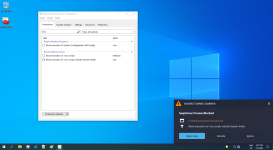Gandalf_The_Grey
Level 82
Thread author
Verified
Honorary Member
Top Poster
Content Creator
Well-known
- Apr 24, 2016
- 7,189
A novel command execution technique dubbed 'GrimResource' uses specially crafted MSC (Microsoft Saved Console) and an unpatched Windows XSS flaw to perform code execution via the Microsoft Management Console.
In July 2022, Microsoft disabled macros by default in Office, causing threat actors to experiment with new file types in phishing attacks. The attackers first switched to ISO images and password-protected ZIP files, as the file types did not properly propagate Mark of the Web (MoTW) flags to extracted files.
After Microsoft fixed this issue in ISO files and 7-Zip added the option to propagate MoTW flags, attackers were forced to switch to new attachments, such as Windows Shortcuts and OneNote files.
Attackers have now switched to a new file type, Windows MSC (.msc) files, which are used in the Microsoft Management Console (MMC) to manage various aspects of the operating system or create custom views of commonly accessed tools.
The abuse of MSC files to deploy malware was previously reported by South Korean cybersecurity firm Genian. Motivated by this research, the Elastic team discovered a new technique of distributing MSC files and abusing an old but unpatched Windows XSS flaw in apds.dll to deploy Cobalt Strike.

New attack uses MSC files and Windows XSS flaw to breach networks
A novel command execution technique dubbed 'GrimResource' uses specially crafted MSC (Microsoft Saved Console) and an unpatched Windows XSS flaw to perform code execution via the Microsoft Management Console.

